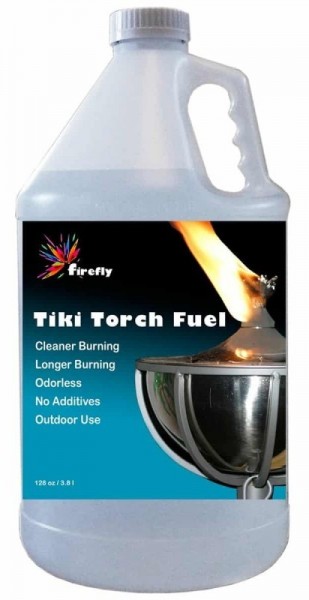
Common, big-box store Tiki Torch Fuel is a petroleum-based fluid. What this means is it has been refined from crude oil. Crude oil is made up of hydrocarbons, which contain a lot of energy. Many of the chemicals derived from crude oil like gasoline, diesel fuel, and of course, tiki torch fuels, utilize this energy.
Time-lapse soot and burn test video to show you the various alternative fuels.
There are alternatives to using tiki torch fuel in your torches; and we don't suggest kerosene as it makes tiki torch fuel look clean! The reason you would want to use another fuel is the fact that tiki torch fuel stinks, produces lots of smoke, and soots up everything in the vicinity.
And, for those who are looking for Homemade Tiki Torch Fuel, a word of warning. I've seen some recipes that are extraordinarily dangerous that use Isopropyl alcohol which is highly flammable. It does not require a wick to burn. If the torch were to fall over, you could have a runaway flame. Argh!
[products ids="40, 628" columns="2" orderby="menu_order" order="ASC"]
Firefly Fuel tiki torch fuel ingredients are DIFFERENT. We offer Proprietary, Eco-Friendly and Readily Biodegradable, Non-Petroleum-Based Fuels for all your lighting needs.
Many torch fuels on the market have added low concentrations of Citronella or Lemongrass oil to repel insects. The Citronella scent confuses mosquitoes, making it difficult for them to locate a host. Other essential oils like Eucalyptus are actually repellents. There are a variety of essential oils that are distasteful to insects that can be added to tiki torch fuel like Cedar Oil, Eucalyptus, Geraniol, and believe it or not one of the best repellents is Catnip Oil; but it is very expensive.
While adding essential oils to tiki torch fuel is effective, it is expensive. I would suggest another approach. We designed the Firefly Zen and Zen Petite Oil Lamps for just that purpose ... to flood the area with scent that repel insects. They both feature an "Aroma Deck" where you place several drops of your preferred essential oil. More drops more scent. This will work beautifully and save you a lot of money.
Of note regarding smoke, the larger the wick, the more potential for smoke. Keeping the wick set ever so slightly above the wick holder, just a nub, will reduce smoke and conserve your tiki torch fuel. Smoke is a result of incomplete combustion. So you want to hit that sweet spot. Also, wind will break the flame, again causing incomplete combustion and produce puffs of smoke.
The absolute best tiki torch fuel is Firefly Tiki Torch Fuel as it burns longer, biodegradable, lower smoke, virtually odorless. The Standard Hotel in Miami is one of our customers and they're thrilled with the performance.
To sum it up, Firefly tiki torch oil is specially selected for its safe, burning properties. Note the words "specially selected" - a can of solvent from the local Home Depot does NOT equal tiki torch fuel. Improvising on your torch oil means running the risk of poisoning your guests with toxic fumes or setting your patio ablaze. At the very least, using low-quality or non-torch fuels will gum up and clog the wick, which seriously limits your torch's performance.
Please don't play with fire - only use fuels specifically created for use with your tiki torch! I know I'm not alone in my research - what's the most unusual suggestion you've found to "make your own tiki torch fuel"?





